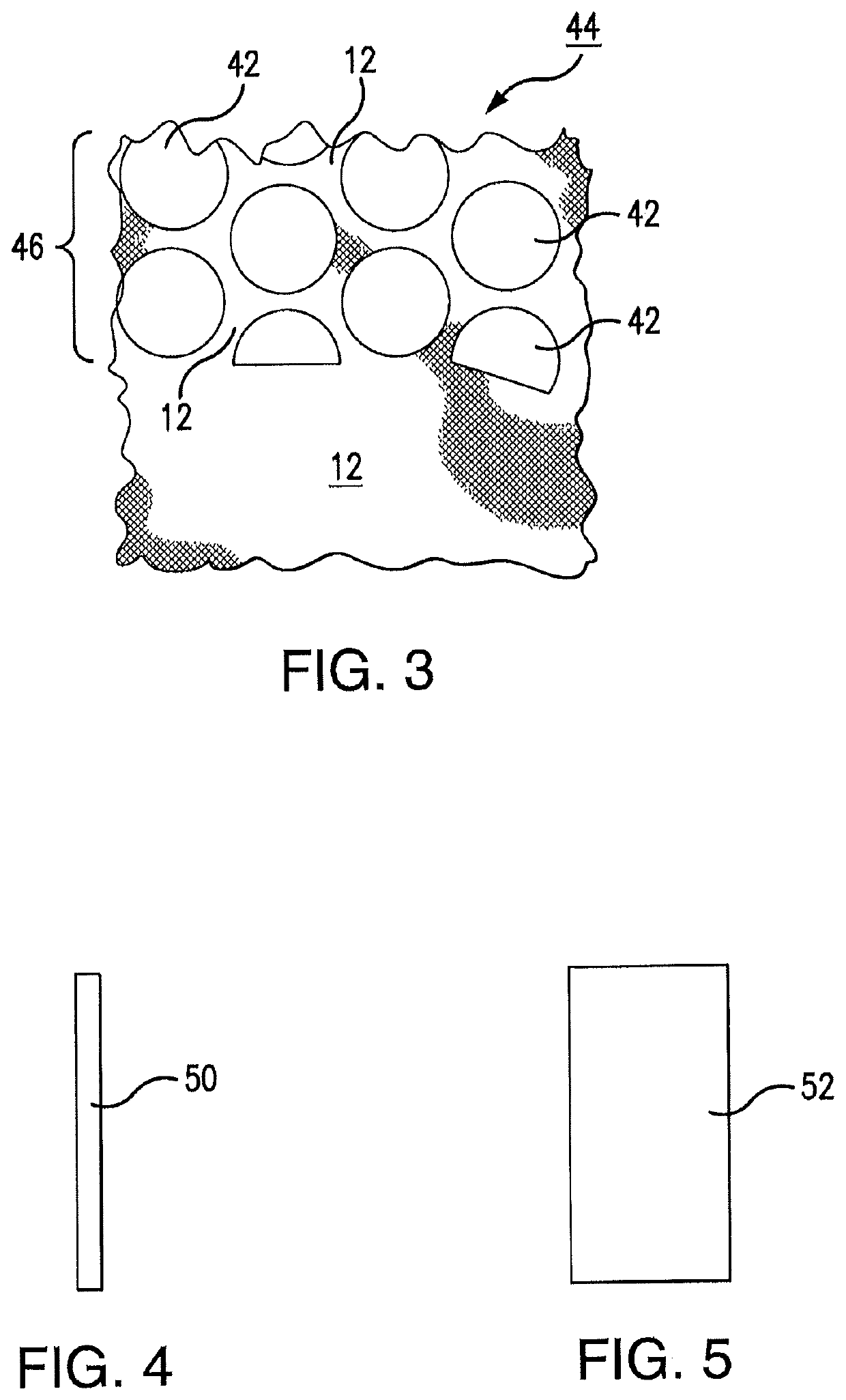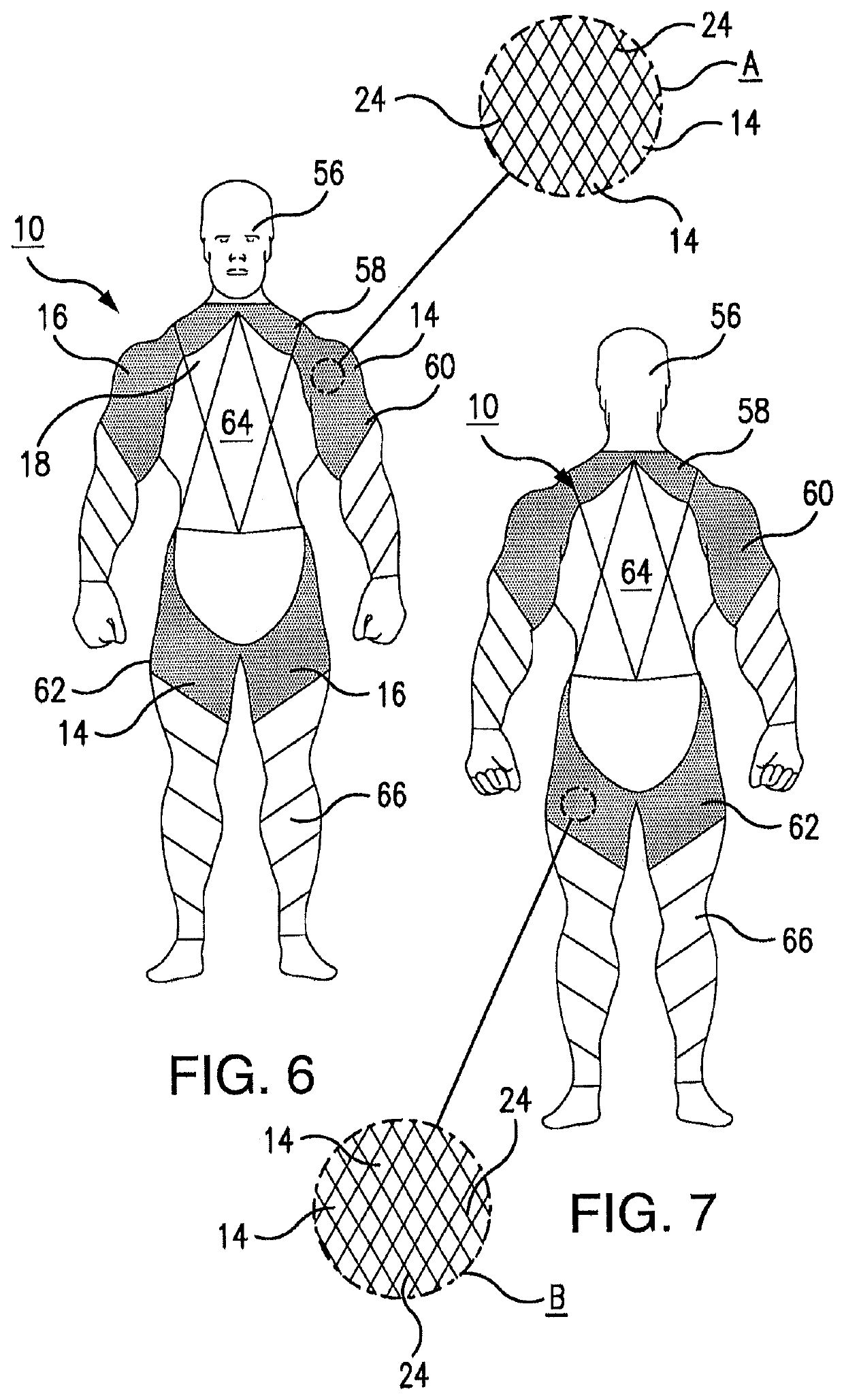Integrated fabric system for apparel
a fabric system and fabric technology, applied in the field of integrated fabric systems, can solve the problems of affecting the function of the body, the articulation to become less stable and functional, and the conventional weight cannot be maintained in the desired position with respect to the wrists and ankles, so as to improve the activities of daily living, reduce the possibility of injury, and improve the effect of functional longevity
- Summary
- Abstract
- Description
- Claims
- Application Information
AI Technical Summary
Benefits of technology
Problems solved by technology
Method used
Image
Examples
Embodiment Construction
[0039]Referring now to the drawings, where like reference numerals designate like elements, there is shown in FIG. 1 an integrated fabric system 10 that is constructed in accordance with one aspect of this disclosure. The integrated fabric system 10 includes cloth or other fabric material 12 and weighted and / or elastic resistance elements 14. The weighted and / or elastic resistance elements 14 extend across an active portion 16 of the integrated fabric system 10. The weighted and / or elastic resistance elements 14 are not located on an inactive portion 18 of the system 10. Most of the weighted and / or elastic resistance elements 14 have a diamond shape in the plan view of FIG. 1, with four sides 20. However, the diamond shape is but an example of the various shapes that may be used for diverse purposes. Some of the weighted and / or elastic resistance elements 14 have truncated-diamond shapes in the plan view of FIG. 1, with truncated edges 22 that are contiguous with a border of the ina...
PUM
 Login to View More
Login to View More Abstract
Description
Claims
Application Information
 Login to View More
Login to View More - R&D
- Intellectual Property
- Life Sciences
- Materials
- Tech Scout
- Unparalleled Data Quality
- Higher Quality Content
- 60% Fewer Hallucinations
Browse by: Latest US Patents, China's latest patents, Technical Efficacy Thesaurus, Application Domain, Technology Topic, Popular Technical Reports.
© 2025 PatSnap. All rights reserved.Legal|Privacy policy|Modern Slavery Act Transparency Statement|Sitemap|About US| Contact US: help@patsnap.com



